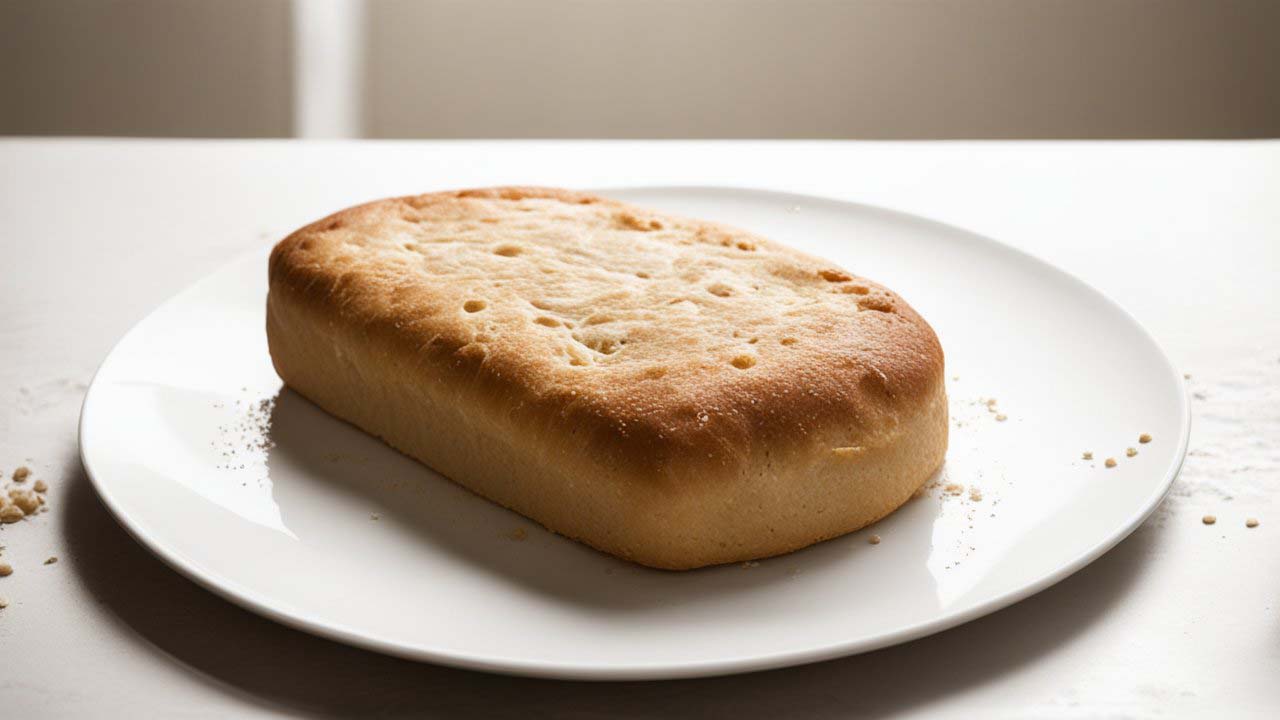SynthRoot 9
SynthRoot 9 is a genetically engineered root-based food substitute that dominates dinner tables worldwide in the year 2120. It has the texture of boiled yam and the taste of slightly fermented soy with a sweet but metallic aftertaste. It is universally disliked but tolerated because there's little else left to eat, and the sweet taste makes you want to eat it.
History & Origin
SynthRoot 9 originated in the New Svalbard Agricultural Complex, a post-climate-collapse bio-lab founded by the remnants of the UN and a mega-corporation called Agrivlard.
Initially created as famine relief during the Second Dust Era (2091–2096), it became a global staple after soil degradation made traditional agriculture nearly impossible.
How It Is Made
SynthRoot 9 is bio-engineered in subterranean vertical farms maintained by autonomous AI-run nutrient systems. It’s a hybrid of old-world cassava, mycelium, and algae DNA, grown in protein-rich gel vats instead of soil.
Production Process:
-
Spliced myco-cassava cells are injected into protein gel beds.
-
Grown in darkness with UV pulses every 6 hours to stimulate mass.
-
Harvested, fermented slightly for preservation.
-
Ground into paste and extruded into blocks or loaves.
-
Fortified with synthetic vitamins and trace metals.
The entire process takes 4 days per batch.
Rarity & Availability
Despite being everywhere, SynthRoot 9 is ironically rare in its pure form. Only government-distributed, rationed packets contain the "Grade A" version. At the same time, black markets and corporate-issued substitutes are often heavily cut with filler compounds like sawdust derivatives, recycled cellulose, or fungal protein paste.
Common Quality (Black Label): Available to 80% of the population via weekly rations.
Pure Quality (Red Label): Reserved for upper-tier citizens, corporate elites, or military officers.
Rarity Score: 3/10 globally, but 8/10 for unadulterated SynthRoot 9.
Base Prices
Black Label (filler mixed): 12 credits per loaf (~$30 equivalent).
Red Label (pure form): 300+ credits per loaf (~$750+), only sold in controlled markets or traded for labor/loyalty.
Street Mix (unknown blend): 5–10 credits, sometimes toxic or spiked with sedatives.
Version Differences Between the Classes
Restaurant Menu For The Rich
Item: “Root Reverence” — SynthRoot 9 Artisanal Cut
Description: Slow-fermented, hand-pressed SynthRoot 9 slab marinated in solar-distilled algae glaze, flash-seared and finished with a dusting of nutritional gold flakes. Served on a bed of oxygen-cultivated barley sprouts and a smear of synthetic balsamic reduction.
Price: 380 credits
Add-on: Real Salt Flake Dusting (+50 Credits)
Origin: Svalbard Core Vault, Batch #9920A. Certified Clean.
Taste Notes: Metallic, earthy, hints of soy-ferment, and warm rust. Pairs well with carbonated kelp tonic or blue-light whiskey.
Black Market Version For The Poor
Name: Slab9 (aka “StreetRoot,” “GrimeLoaf,” or “Dead Yam” in slang)
Availability: Ubiquitous in slums, outposts, undercity tunnels, and collapsed zones.
Description: Slab9 is the street-cut version of SynthRoot 9—barely resembling the government-issued variety. Most versions are scraped from industrial waste vats, smuggled via sewer lines, or illegally fermented in bio-hackers’ basement reactors.
Ingredients (estimated):
30% SynthRoot extract (usually expired or failed-grade)
40% filler: sawdust pulp, shredded ration wrappers, fungal chaff
20% water-binding agent or mold inhibitors
10% “flavor enhancer” (typically synthetic vinegar, glue solvent, or bootleg MSG)
Preparation
Kneaded into bricks and wrapped in thermal tape. Often traded in alley markets, bartered for battery power, or rehydrated with drain water and eaten like jerky.
Common Street Varieties
“Crack9” – Crunchy, over-dried variant with microplastic texture. Sold by the slice.
“Rootie” – Soft mash version served in cups, sometimes with crushed bugs for protein.
“Ashloaf” – Baked in trash fires; charcoal crust is considered "a delicacy" in slums.
Street Price: 2–4 credits (or equal in boot polish, soap, or clean water).
Health Risk: High. Often laced with sedatives or stimulants. Known to cause NeuroStutter Syndrome in high doses.
Regional Differences
While SynthRoot 9 is standardized, preparation and presentation vary across the world:
Neo-Tokyo Arcologies: Served as cold slices, dipped in amino sauces for added flavor.
US Wasteland Zones: Fried in reclaimed oil and topped with crushed calcium tablets.
European Dome Cities: Paired with hydroponic microgreens or beet slurry; some add artificial umami powder.
African Terradomes: Mixed with crushed insect protein and chili paste to mask the flavor.
The Caste: Powdered SynthRoot 9 is rehydrated into porridge, often blended with lab-grown meat broth (for the elite only).
Agrivlard Advertisement
Brought to you by Agrivlard: Feeding the Future™.
[Video Transcript – Holographic Ad]
Upbeat orchestral synth music. A smiling family sits around a spotless chrome table. The mother slices into a glowing SynthRoot 9 loaf. Everyone nods in choreographed joy.
Narrator (warm, soothing voice):
“In a world of uncertainty, one thing remains constant—Nutrition. Agrivlard’s SynthRoot 9™ is the scientifically perfected root that powers our people. Engineered with care in the purity of the Svalbard Vaults, SynthRoot 9™ gives your family everything they need... and nothing they don’t.”
The scene cuts to a lab technician in a sterile white suit, gently handling glowing root samples.
“Rich in nine bio-essential nutrients and over 87 government-certified amino clusters, SynthRoot 9™ keeps your blood clean, your bones solid, and your mind focused.”
A golden badge fades in: “Recommended by 6 out of 6 Global Health Ministries.”
Narrator (lower, serious tone):
“Choose trust. Choose resilience. Choose SynthRoot 9™.
Agrivlard: We grew your tomorrow.™”




Comments